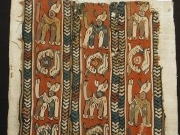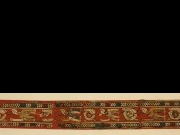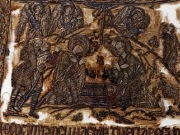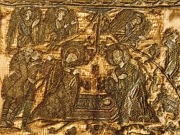Textiles Conservation Workshop
The textiles conservation workshop has been up and running since 1999, and currently employs two conservators. It is responsible for almost 1,200 artefacts, mostly ecclesiastical vestments of various kinds. The majority of the items feature a combination of materials, with plant, animal and metal threads, sequins, paper and painted surfaces among the most common. A very small number of the artefacts in the Textile collection were conserved prior to 1999 by external conservators. Unfortunately, unsuitable storage conditions in the past and human interventions have impacted negatively on the Textile collection’s state of preservation.
The two core principles which guide the workshop’s activities and are enshrined in the conservators’ code of practice are the preservation of the original character and aesthetic of the artefact under conservation, and the reversibility of all interventions.
In addition to examining the condition of an artefact, conducting interventional conservation and documenting the collection, the workshop also researches and identifies the materials used in their fabrication as well as the structure and pathology of the textiles, performing specialist scientific analyses in collaboration with certified external laboratories. The workshop’s most common conservation activities include:
• Cleaning: dry and wet, in which case de-ionized water or solvents are used on a cleaning table. Especially delicate objects are cleaned on a special suction table.
• Providing old textiles with new textile backing.
• Dyeing new textiles used to support old textiles.
The workshop also:
• Prepares textile artefacts for transformation and exhibition.
• Monitors the climatic conditions pertaining in the areas used to store and exhibit the Museum’s textiles collection.
• Studies, documents and photographs the artefacts in the collection with a view to grouping them by provenance, age, artist, dedicator etc.
• Oversees students gaining practical experience in the textiles workshop.











